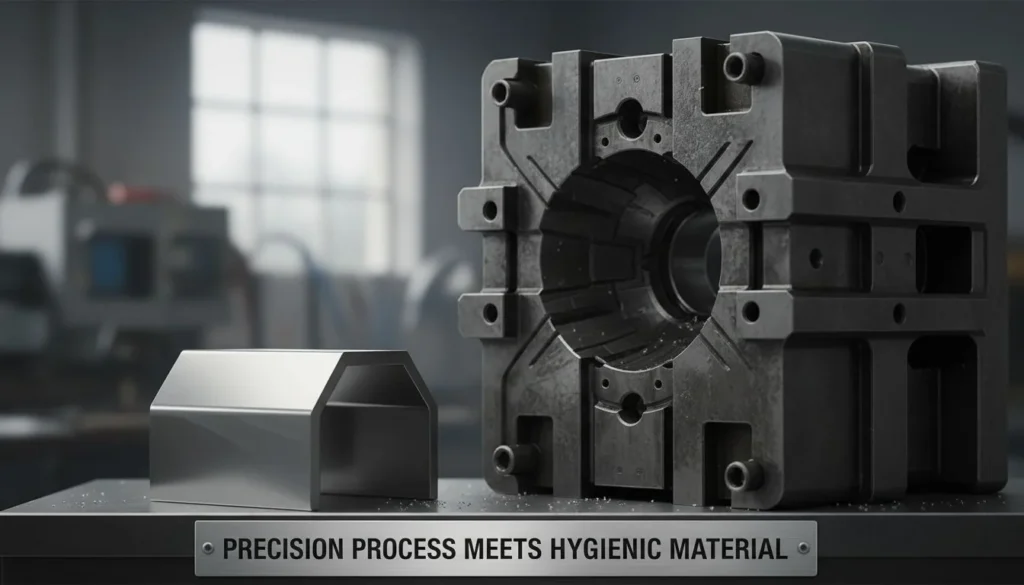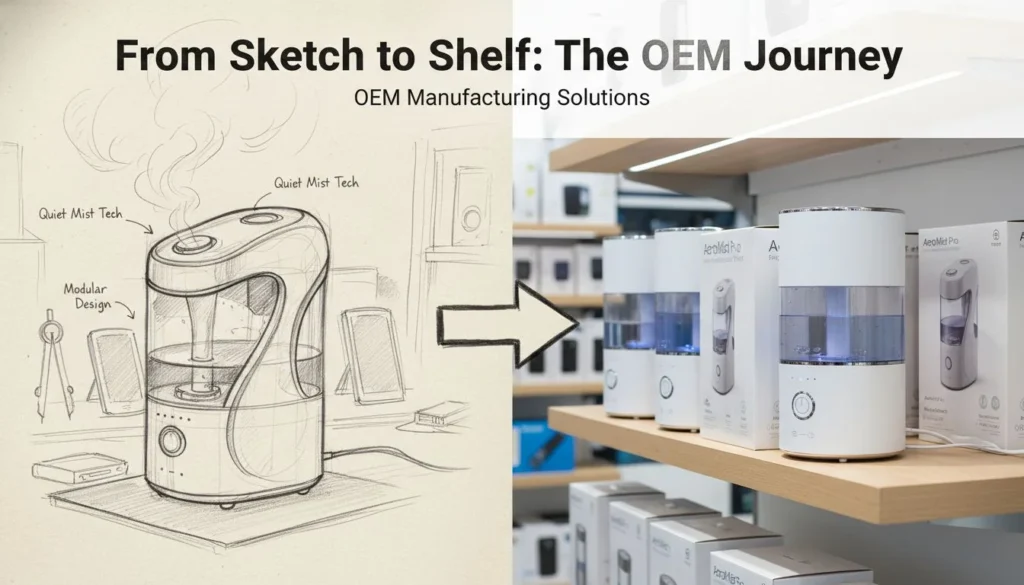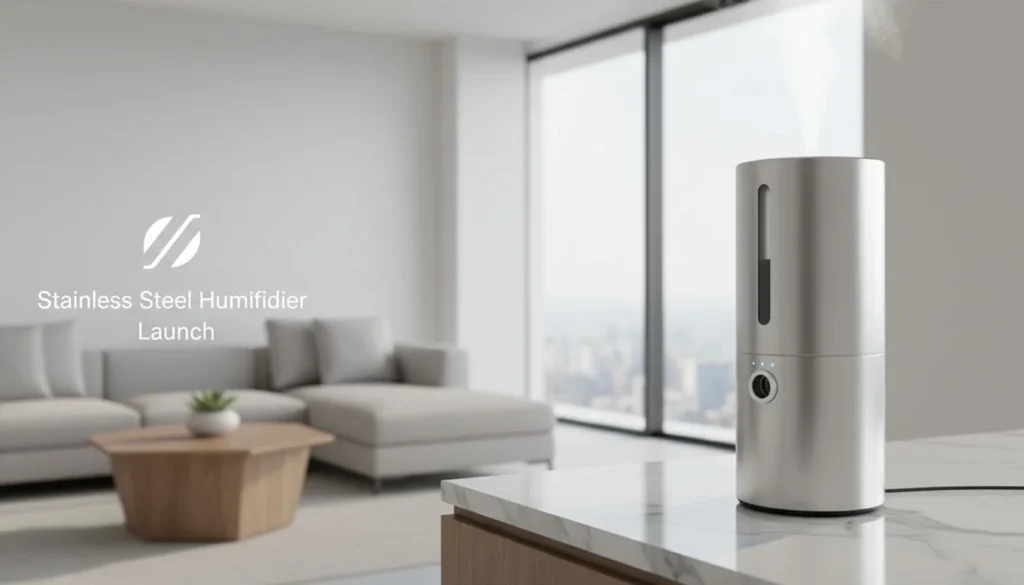O fabrico de um purificador de ar envolve uma série de etapas complexas, desde a investigação e desenvolvimento (I&D) até aos testes de qualidade e à produção em massa. À medida que a poluição do ar e os contaminantes interiores se tornam preocupações globais de saúde, a procura de purificadores de ar eficazes continua a crescer. Este artigo fornece um guia completo para o fabrico de purificadores de ar, com foco em processos eficientes, tecnologias necessárias e conformidade regulamentar.
Índice
- Introdução
- O que é um purificador de ar?
- Componentes principais de um purificador de ar
- Processo de fabrico de um purificador de ar
- O papel do CFD e dos ventiladores de alto desempenho na eficiência dos purificadores de ar
- Principais tecnologias e inovações em filtração
- Comparação de tecnologias de filtragem
- Medidas pormenorizadas de controlo da qualidade
- Desafios comuns no fabrico de purificadores de ar
- Conclusão
Introdução
Numa época em que a qualidade do ar está cada vez mais ligada aos resultados em termos de saúde, os purificadores de ar desempenham um papel crucial na redução dos poluentes interiores, como os alergénios, os esporos de bolor e os compostos orgânicos voláteis (COV)1. Este artigo explora o processo completo de fabrico de purificadores de ar, componentes essenciais e considerações sobre a qualidade e conformidade do produto.
O que é um purificador de ar?
Um purificador de ar é um dispositivo concebido para remover os contaminantes do ar, melhorando a qualidade do ar interior2 em casas, escritórios e instalações médicas. O principal objetivo de um purificador de ar é filtrar os poluentes que podem provocar problemas respiratórios e outros problemas de saúde3. Os purificadores de ar existem em vários tipos, desde filtros à base de HEPA a dispositivos avançados de ionização e à base de UV-C, cada um deles adequado a diferentes necessidades e ambientes4.
Componentes principais de um purificador de ar
Os purificadores de ar são compostos por vários componentes, cada um com um objetivo específico5. Os principais componentes são:
- Filtros HEPA: Captura 99,97% de partículas tão pequenas como 0,3 mícrones, incluindo alergénios, pólen e pó6.
- Filtros de carvão ativado: Absorver gases e odores, como os COV, o fumo do tabaco e os odores da cozinha7.
- Conjunto do ventilador e do motor: Assegura o fluxo de ar através do filtro, essencial para uma purificação eficaz. As ventoinhas de elevado desempenho são essenciais para equilibrar o caudal de ar com a redução do ruído, um desafio fundamental no fabrico de purificadores de ar8.
- Painel de controlo: Permite aos utilizadores controlar a velocidade, o temporizador e as definições de modo.
Processo de fabrico de um purificador de ar
O processo de fabrico do purificador de ar pode ser dividido em quatro fases principais: pesquisa de mercado e conceção, seleção de componentes, montagem e ensaio e controlo de qualidade.
1. Estudos de mercado e conceção
Os estudos de mercado são essenciais para compreender o público-alvo e as tendências actuais da tecnologia de purificação do ar. As empresas avaliam as preferências dos consumidores e os produtos da concorrência para conceber um purificador que satisfaça ou exceda as expectativas do mercado9. Os principais domínios de incidência incluem:
- Necessidades dos consumidores: Identificação das principais preocupações, como o nível de ruído, a vida útil do filtro e o tamanho.
- Análise da concorrência: Estudar os líderes de mercado e analisar as caraterísticas para conseguir a diferenciação10.
- Factores ambientais: Avaliação de factores como os tipos de poluentes típicos dos mercados-alvo (por exemplo, pólen em zonas urbanas ou COV em ambientes industriais).
Objectivos de conceção: Redução do impacto da unidade na vida quotidiana através da conceção de modelos mais silenciosos com técnicas inovadoras de redução de ruído (por exemplo, Decibel Cancellation™) e de circulação de ar.
2. Seleção de componentes
Uma vez finalizado o design, a seleção de componentes de qualidade é o passo crítico seguinte. No caso dos purificadores de ar, os componentes essenciais incluem os filtros HEPA, as camadas de carvão ativado, os motores dos ventiladores e as caixas11. As empresas devem dar prioridade a componentes com elevada durabilidade e eficiência para garantir a qualidade e a longevidade do produto12.
| Componente | Descrição | Função-chave |
|---|---|---|
| Filtro HEPA | Remove as partículas finas em suspensão no ar | Filtragem de partículas |
| Carvão ativado | Absorve os COV e os odores | Filtragem de gases e odores |
| Ventilador de alto desempenho | Equilibra o fluxo de ar e o ruído | Controlo do fluxo de ar e do ruído |
| Painel de controlo | Permite ajustar a velocidade e o modo | Interface e controlo do utilizador |
3. Montagem e ensaio
Durante a montagem, os componentes são integrados na caixa do purificador de ar de acordo com as especificações do projeto13. Nesta fase, o controlo de qualidade é fundamental para garantir que todos os componentes funcionam corretamente e que o purificador cumpre as normas de segurança.
- Teste de nível de ruído: Utilizando a tecnologia Decibel Cancellation™, os níveis de ruído são optimizados para garantir um funcionamento silencioso adequado a ambientes domésticos e de escritório14.
- Teste de caudal de ar: Os testes são efectuados para confirmar que a taxa de fornecimento de ar limpo (CADR) cumpre as especificações do produto, assegurando um equilíbrio eficaz entre a velocidade da ventoinha e a filtragem15.
Os purificadores de ar com filtros HEPA melhoram significativamente a qualidade do ar interior.Verdadeiro
Os filtros HEPA capturam 99,97% das partículas, tornando os purificadores de ar altamente eficazes no controlo da poluição.
4. Controlo de qualidade e certificação
O controlo de qualidade inclui uma série de testes rigorosos para confirmar que cada unidade cumpre as normas da indústria. Os purificadores de ar estão sujeitos a certificações como as normas CE, AHAM e HEPA para garantir a segurança e a eficácia. Um aspeto crucial deste controlo é assegurar que o CADR se encontra dentro do intervalo pretendido para cada tipo de produto, uma vez que um CADR mais elevado indica a capacidade do purificador para limpar o ar de forma eficaz16.
Todos os filtros HEPA removem eficazmente os odores e os COV.Falso
Os filtros HEPA capturam partículas, não gases; apenas os filtros de carvão ativado absorvem os COV.
O papel do CFD e dos ventiladores de alto desempenho na eficiência dos purificadores de ar
Um ventilador de alto desempenho e baixo ruído é essencial no fabrico de purificadores de ar para manter um fluxo de ar ótimo através dos filtros, minimizando o ruído17. A Dinâmica de Fluidos Computacional (CFD) desempenha um papel importante na conceção de purificadores de ar eficientes, uma vez que ajuda os fabricantes a simular o fluxo de ar e a otimizar as concepções dos ventiladores e das condutas.
- Equilíbrio entre potência e ruído da ventoinha: A velocidade da ventoinha afecta os níveis de ruído, pelo que os fabricantes utilizam CFD para testar configurações que maximizem o fluxo de ar sem aumentar o ruído18.
- Fluxo de ar e resistência do filtro: A eficácia de um purificador de ar depende em grande medida do equilíbrio entre a resistência do filtro e a capacidade da ventoinha. A utilização de filtros menos densos combinada com uma conceção optimizada do fluxo de ar pode ajudar a obter um CADR elevado com um ruído mínimo19.
- CADR (Clean Air Delivery Rate): O CADR, medido em pés cúbicos por minuto (CFM), é uma métrica fundamental para determinar a eficácia de um purificador de ar20. Um CADR mais elevado combinado com um baixo nível de ruído é um indicador da qualidade do fabrico e da conceção.
Para uma compreensão mais aprofundada da CADR nos purificadores de ar, leia isto Guia da EPA para a taxa de entrega de ar limpo.
Principais tecnologias e inovações em filtração
As tecnologias avançadas de filtragem têm continuado a evoluir, aumentando a eficácia dos purificadores de ar. Esta secção explora as inovações recentes:
- Precipitação eletrostática: Esta tecnologia carrega as partículas para que adiram às placas de recolha21. Oferece uma filtragem de longa duração sem necessidade de substituição frequente.
- Ionização: Eficaz na redução de partículas, embora possa produzir baixos níveis de ozono. Geralmente melhor para ambientes industriais com elevada ventilação22.
- Tecnologia UV-C: Destrói as bactérias e os vírus através da decomposição do seu ADN. É eficaz para hospitais, mas é frequentemente utilizado em combinação com HEPA para um melhor desempenho23.
- Filtros hidrofóbicos e hidrofílicos: Utilizado para capturar poluentes à base de óleo e água, garantindo longevidade e proteção reforçada em purificadores de ar destinados a ambientes específicos, como cozinhas e pavimentos industriais24.
Para obter mais informações sobre cada tecnologia, visite Explicação das tecnologias de purificação do ar.
Comparação de tecnologias de filtragem
Segue-se uma tabela de comparação para ajudar a distinguir as várias tecnologias de filtragem nos purificadores de ar.
| Tecnologia de filtragem | Eficácia | Subprodutos | Melhores utilizações |
|---|---|---|---|
| Filtro HEPA | Elevado | Nenhum | Alergénios, pó |
| Carvão ativado | Moderado | Nenhum | Odores, COVs |
| Luz UV-C | Variável | Nenhum | Controlo de agentes patogénicos |
| Ionização | Moderado | Potencial de ozono | Redução do pó e do pólen |
| Eletrostática | Moderado | Nenhum | Aplicações industriais |
Medidas pormenorizadas de controlo da qualidade
Garantir a qualidade dos purificadores de ar implica várias medidas de controlo de qualidade (CQ):
- Teste de integridade do filtro: Verifica se os filtros cumprem ou excedem as suas capacidades nominais de filtragem, o que é fundamental para os sistemas HEPA e à base de carbono25.
- Ensaio de ruído: Realizado numa câmara anecóica para medir e ajustar com precisão os níveis de decibéis para um conforto ótimo26.
- Calibração do sensor de qualidade do ar: Assegura que os sensores detectam e comunicam com precisão as alterações da qualidade do ar. A calibração dos sensores PM2.5, CO2 e VOC é essencial27.
- Ensaios de fugas: Confirmar a integridade do invólucro para garantir que nenhum ar não filtrado passa pelo sistema de filtragem, o que reduziria o desempenho global28.
- Ensaios de durabilidade: Inclui testes sob temperaturas extremas, vibração e stress para simular várias condições ambientais29.
Desafios comuns no fabrico de purificadores de ar
O fabrico de purificadores de ar coloca desafios únicos que requerem um planeamento cuidadoso e inovação:
- Controlo do ruído: O ruído é uma das principais preocupações na conceção de purificadores de ar. Ao utilizar tecnologias como a Decibel Cancellation™, os fabricantes podem reduzir o ruído operacional sem comprometer o caudal de ar30.
- Equilíbrio entre a resistência do filtro e a potência da ventoinha: Os purificadores de ar eficazes equilibram a força da ventoinha com a resistência do filtro para otimizar os níveis de CADR e de ruído31.
- Consumo de energia: Garantir uma elevada circulação de ar sem consumo excessivo de energia é um desafio fundamental. A utilização de motores de corrente contínua pode reduzir o consumo de energia, mantendo o desempenho32.
- Conformidade com os regulamentos: Os purificadores de ar devem cumprir as normas locais e internacionais, tais como as certificações AHAM e CE, para serem legalmente distribuídos. Os testes de COVs, filtragem de partículas e consumo de energia são essenciais para a conformidade33.
Conclusão
O fabrico de purificadores de ar requer uma mistura de tecnologia de filtragem avançada, um rigoroso controlo de qualidade e um profundo conhecimento das necessidades dos consumidores. À medida que a procura de ar interior limpo continua a aumentar, a inovação na redução do ruído, na eficiência da filtragem e nos designs de fácil utilização continua a ser uma prioridade para os fabricantes.







